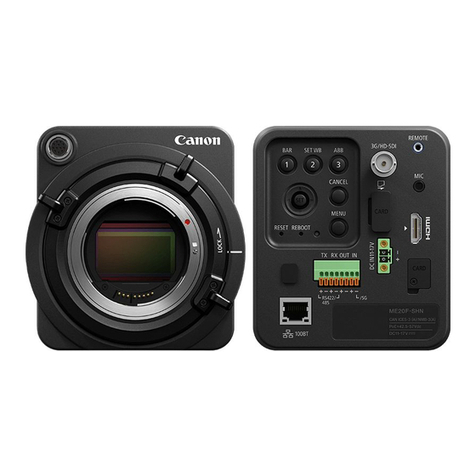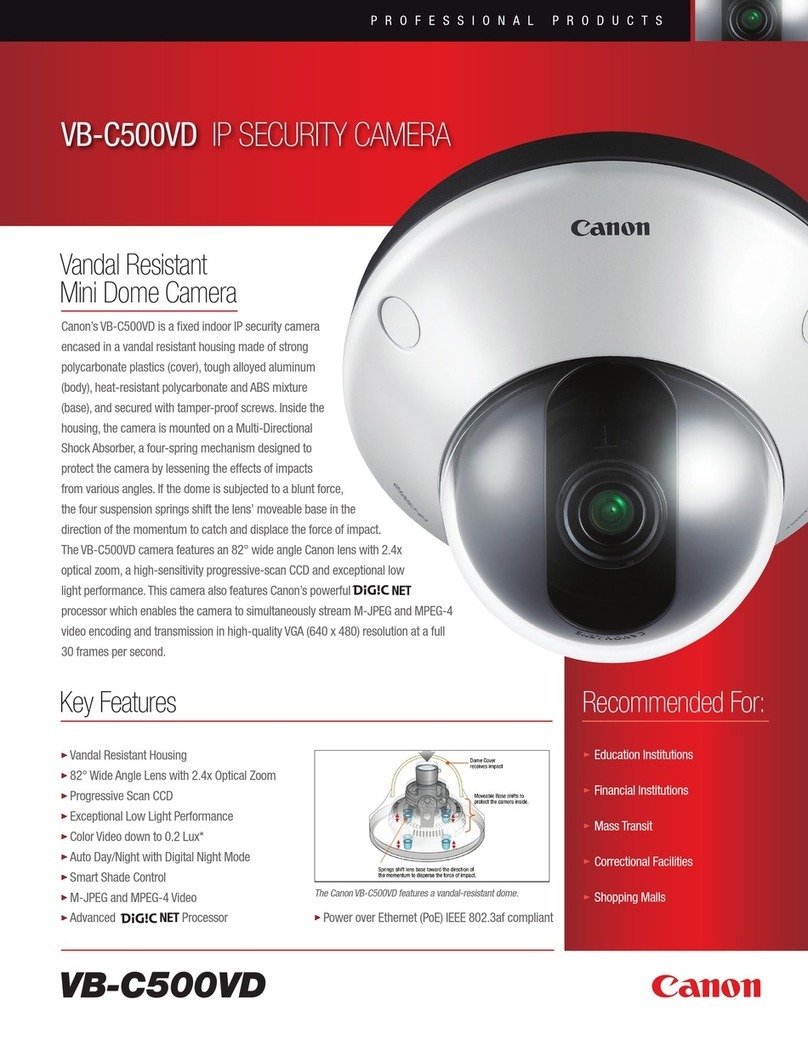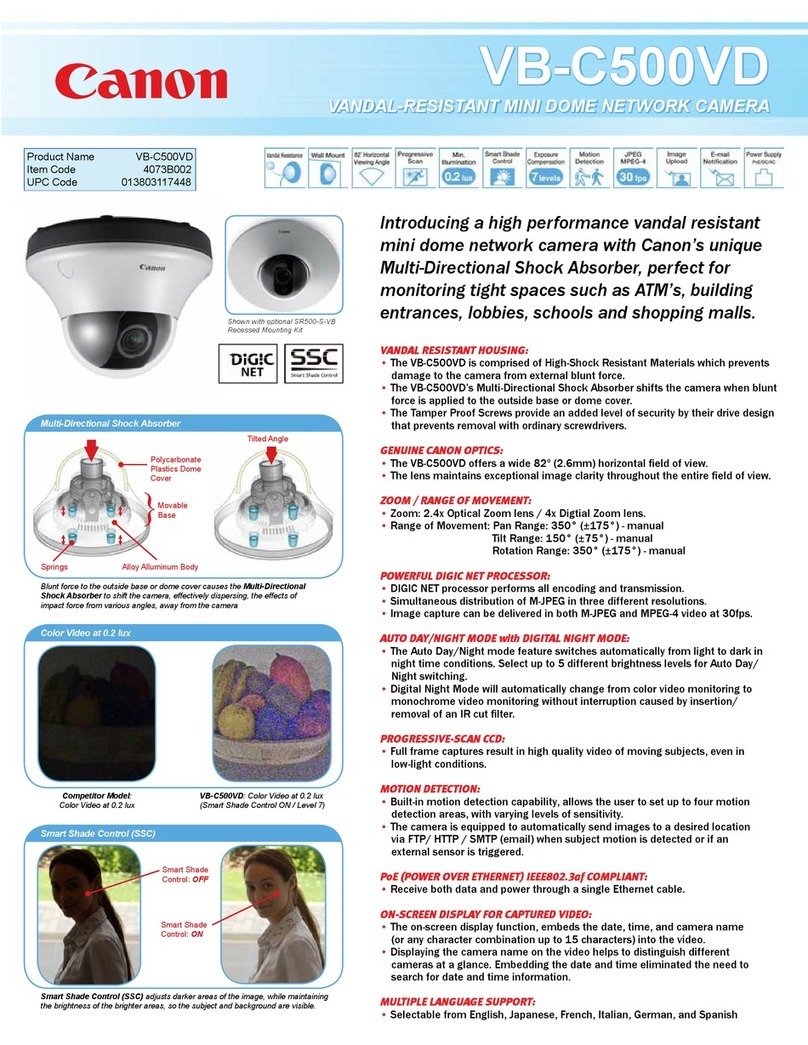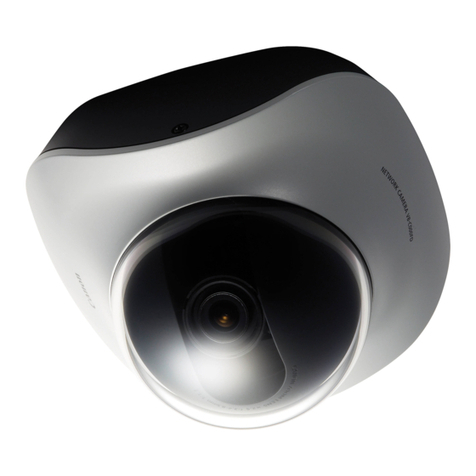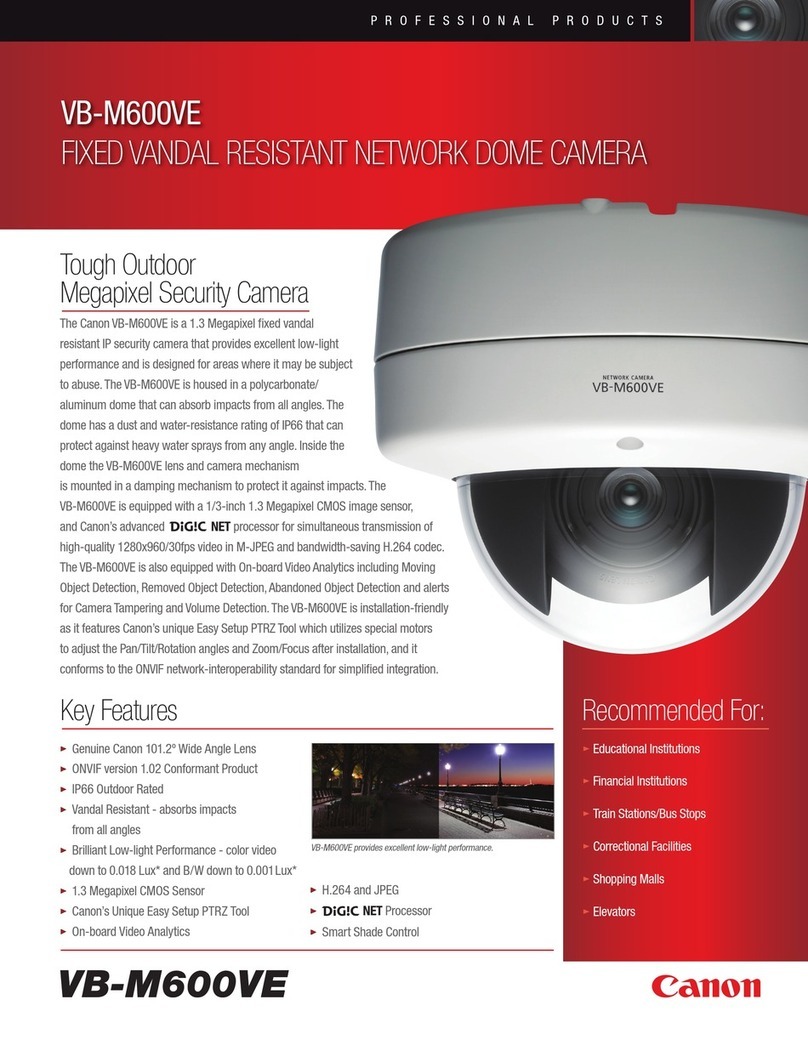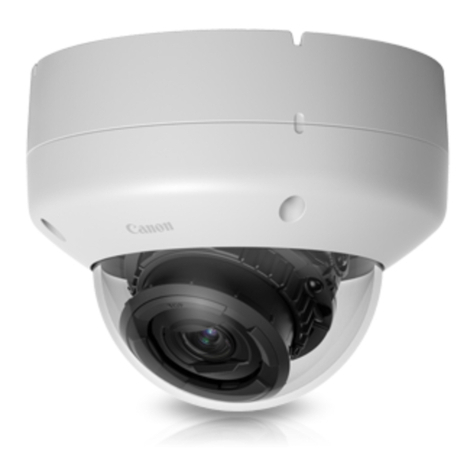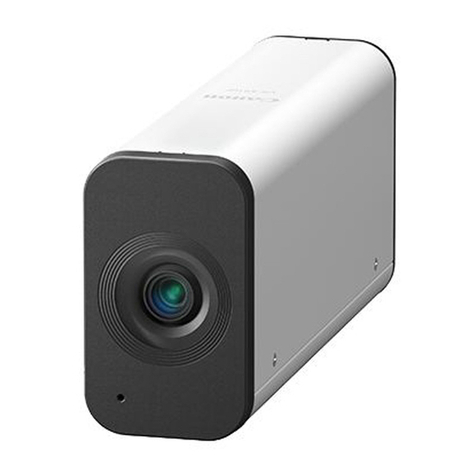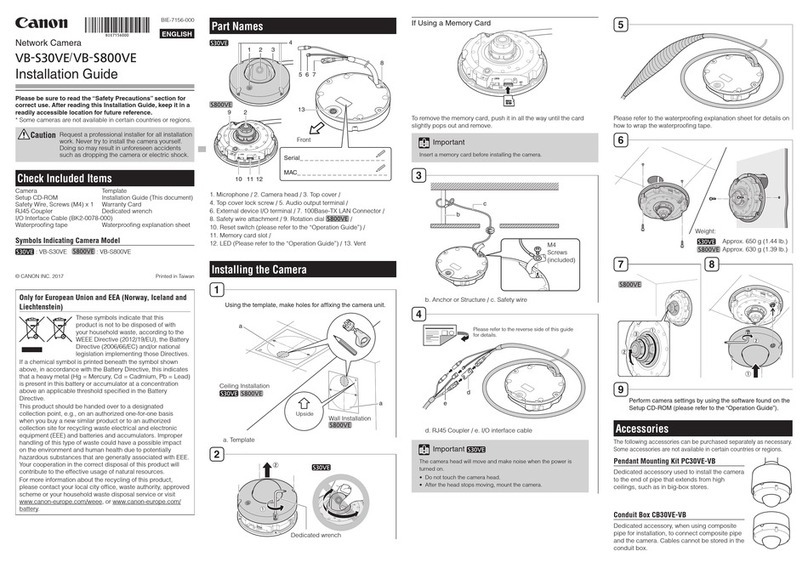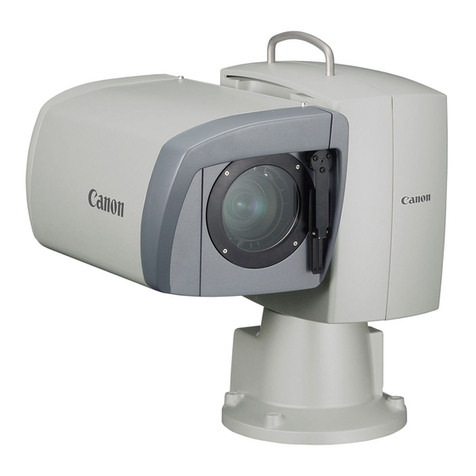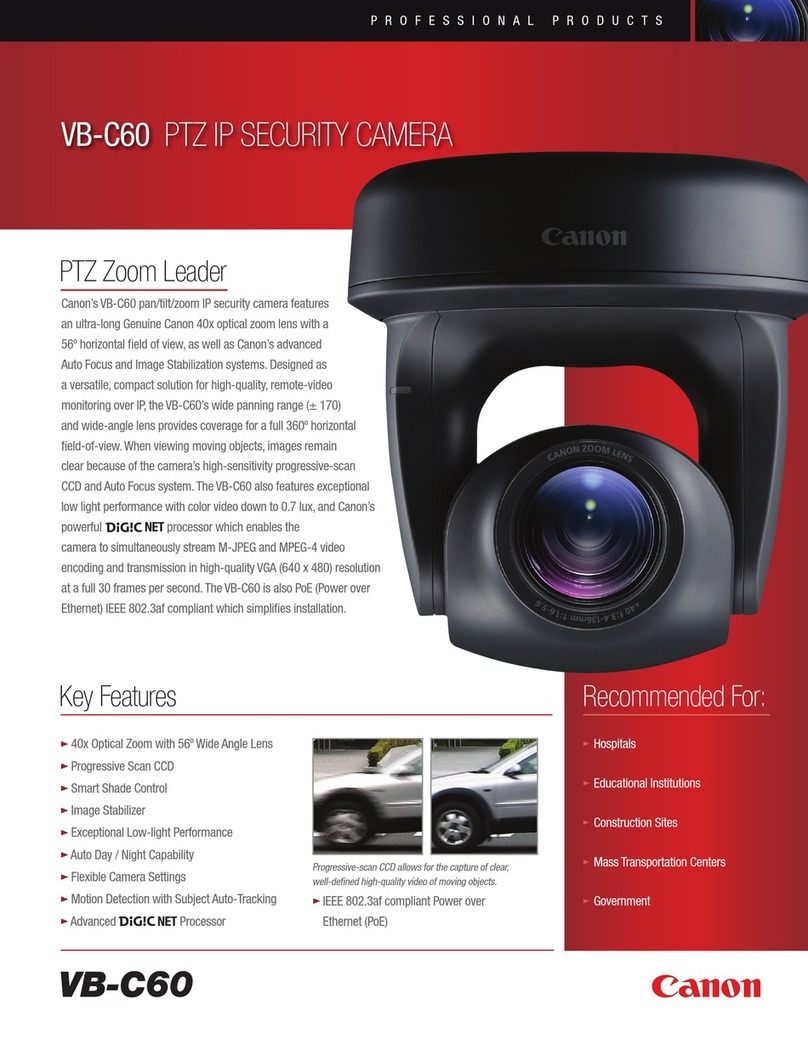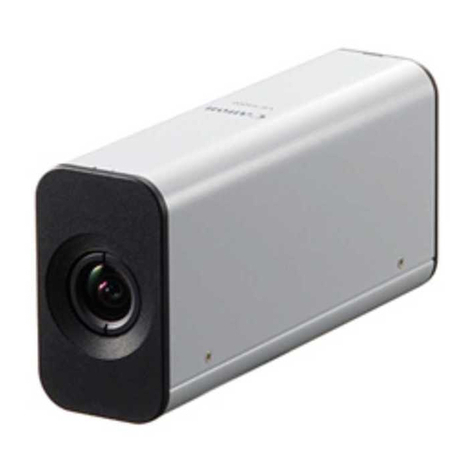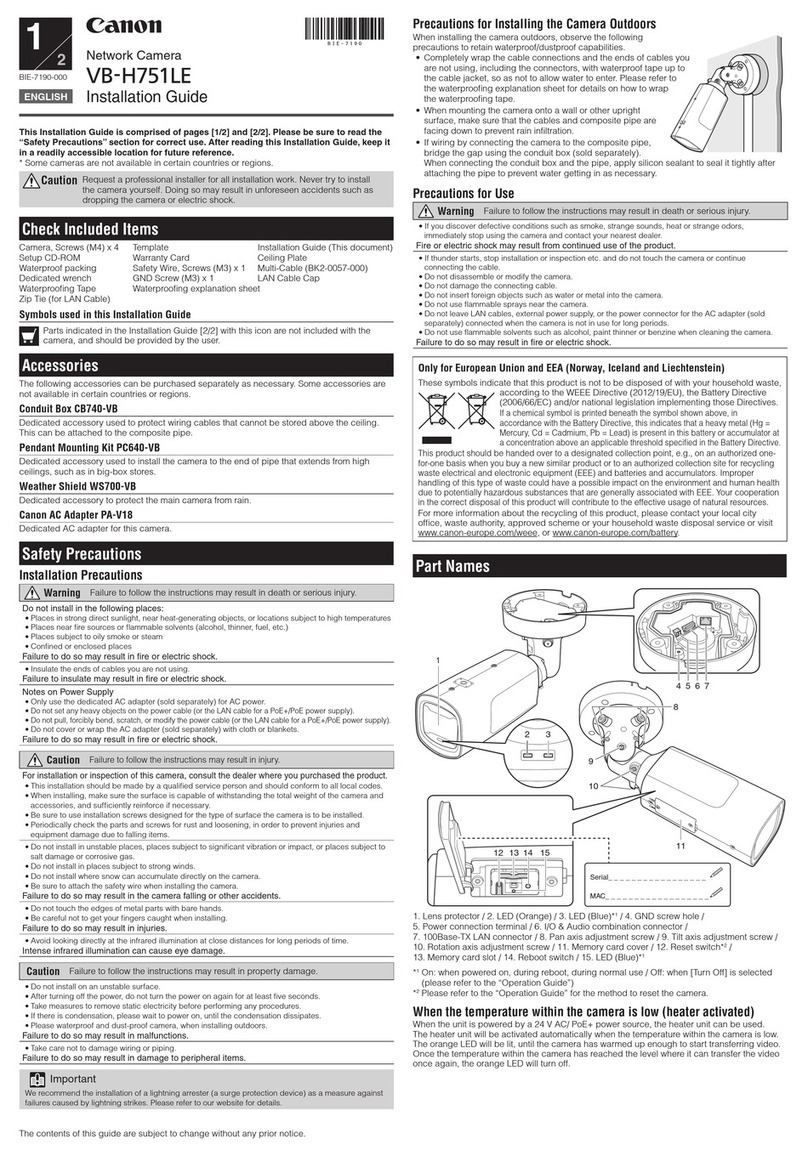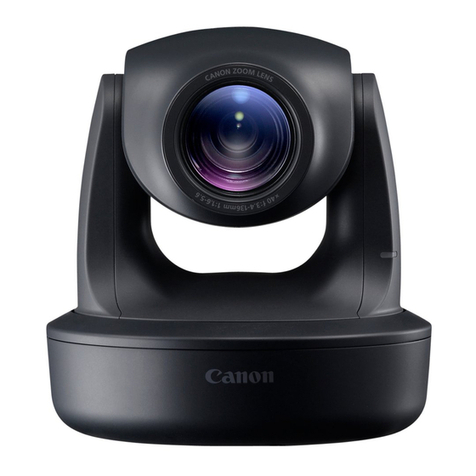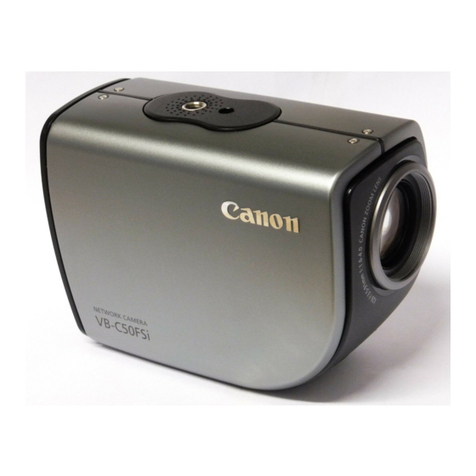
9
Installing the Camera
Notes on Outdoor Installation
• Wrap insulating tape around each cable connection to insulate.
• The camera body complies with dust-resistant/waterproof specification (IP66),
however, the cables connecting to external devices are not. When installing in a place
where it may be exposed to even a small amount of water, wrap waterproofing tape
(included) around the entire cable joint and the end of the insulated and unused
cable to ensure waterproofing. For the procedure on wrapping waterproofing tape,
refer to “How to Wrap Waterproofing Tape”(P. 10)
• When connecting the camera to the composite pipe (3/4 inch NPSM plumbing screw
holes), bridge the gap using the conduit box (sold separately). When connecting the
conduit box and the pipe, weatherproof the end of the pipe, if necessary, by wrapping
it with sealing tape, clean it of any dirt, and then firmly secure it. Also, apply silicon
sealant or a similar substance as necessary to seal the pipe tightly after attachment.
• The accessory items for installation are not dust-resistant and waterproof. Even if the
cable joint fits inside the accessory product, if the product may be exposed to water,
wrap waterproofing tape (included) around the joint.
• The dome casing may cloud (due to time related deterioration of the dome material),
if set up under direct sunlight.
• This camera complies with the dust-resistant/waterproof specification (IP66) rating.
However, long exposure to rain may result in the corrosion of the outer shell, due to
acid and heavy metals in the rain water.
• For cameras installed outdoors, rain, snow, frost, etc. may adhere to the top cover,
making it difficult to see the image. In addition, the top cover may become dirty and
the image quality may deteriorate due to the effects of dust in the air and exhaust gas
from automobiles. When installing outdoors, pay close attention to the impact of the
environment on the image.

